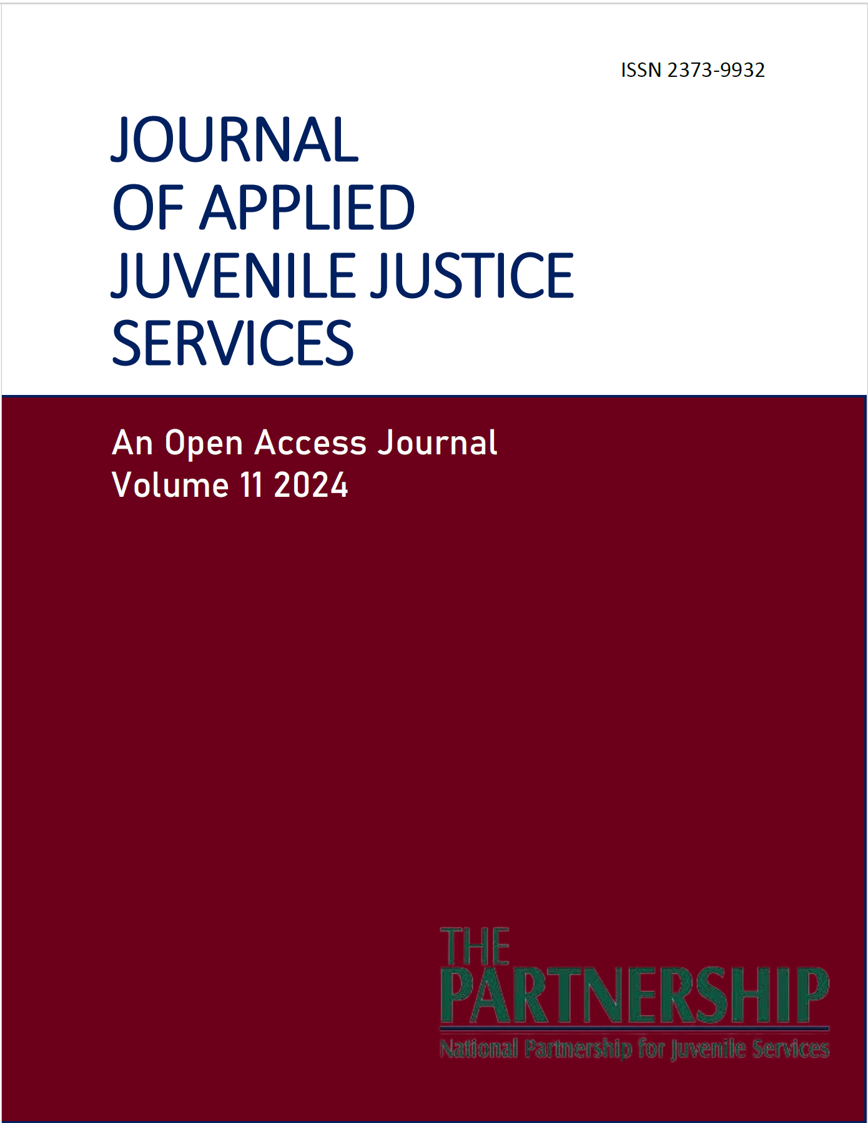Developmental Maturity and Risk Behaviors of First-Time Offending, Court-Involved, Non-Incarcerated Youth
Kathleen Kemp*a,b, Megan S. Irgens c, d, Brittney Poindexter c, d, Katelyn Affleck a, b, Brandon D.L. Marshall e, Daphne Koinis-Mitchell a, b,
Marina Tolou-Shams f, g
Highlights
- Maturity is associated with onset of substance use and delinquency
- Less mature youth used alcohol and marijuana earlier than their peers
- Less mature youth engaged in frequent delinquent behaviors than their peers
- Emotionally regulated youth engaged in less delinquency than their peers
- Interventions can target maturity to address substance use and delinquency
Abstract
Objective: Youth in contact with the justice system have higher rates of risky behaviors such as substance use than youth not in contact, yet the mechanisms underlying these behaviors are not clearly understood. Research with incarcerated and post-adjudicated adolescent samples have examined some of the individual level factors by examining the relationship between psychosocial maturity and substance use; however, adolescents at point of first contact with the juvenile justice system, a crucial point of intervention and diversion, have been given little attention. Method: The current study examined the relationship between psychosocial maturity, including emotion regulation, and high-risk behaviors such as substance use and delinquency in court-involved, non-incarcerated youth at point of first juvenile court contact. Results: MANCOVA analyses and logistic regressions partially supported our hypotheses that lesser psychosocial maturity was associated with earlier onset of substance use and increased delinquent behaviors. Conclusion: Findings inform potential intervention needs around specific elements of psychosocial maturity for youth involved in the justice system.
Keywords
Adolescent, Juvenile Justice, Development, Delinquency, Substance Use
INTRODUCTION
Adolescence is an important developmental period with physical, emotional, and social areas of growth and vulnerability (Moffitt 1993; Steinberg 2008). Many have argued that risky decision making is a hallmark of this developmental period with behaviors such as reckless driving, physical fights and risky sexual behavior being heightened during this time (Cauffman & Steinberg, 2000; L. Steinberg, 2005). For many youths, risky decision making also leads to engagement in other problematic behaviors including substance use and illegal activities (Kann et al., 2012; Piquero, 2008; Piquero et al., 2001). Factors at the individual, family, and community level can serve as risk or protective factors of adolescent risky decision making, such as substance use (see Nawi et al., 2021 for a review). At the individual level, traits such as adolescent impulsivity, rebellion, and lack of emotion regulation skills serve as risk factors for adolescent substance use (as cited in Nawi et al., 2021).
Research with incarcerated and post-adjudicated adolescent samples have examined some of the individual level factors by examining the relationship between psychosocial maturity and substance use (e.g., Chassin et al., 2010; Cruise et al., 2008); however, adolescents at point of first contact with the juvenile justice system, a crucial point of intervention and diversion, have been given little attention. Without intervention, these youth may penetrate further into the juvenile justice system (i.e., juvenile detention), and therefore may be at increased risk of negative outcomes such as criminal recidivism, school dropout, and unemployment into adulthood. Understanding risk behaviors in the context of the adolescent psychosocial maturation process may help improve our understanding of initiation of these risky behaviors and our ability to provide early intervention (Chassin et al., 2010). The current study examines the relationship between psychosocial maturity, substance use, and delinquency among a sample of youth in first-time contact with the juvenile courts.
Psychosocial Maturity Development
Cauffman and Steinberg (1995), with influence from Greenberger and Sorenson (1974), describe psychosocial maturity (PSM) as the psychosocial processes that youths undergo when making decisions. PSM is comprised of three specific psychosocial factors. First, responsibility characterizes an ability to function independently and make autonomous decisions and overall general self-reliance. Second, perspective incorporates the ability to see both short- and long-term consequences of potential actions, as well as the ability to recognize and consider the viewpoints of another person in the decision-making process. Lastly, temperance involves the ability to delay action and limit impulsivity, which involves curbing immediate responses and exhibiting self-control.
More recently, psychosocial maturity was described with similar distinct functional domains that map onto the original PSM theory but with the addition of a fourth distinct domain: emotion regulation (Kemp et al., 2017). Emotion regulation is a skill that aids individuals in regulating responses to stimuli or situation, which is an imperative skill during decision making. Furthermore, emotion regulation has a well-established literature that underscores its role as an important component of adolescent development (Boyer, 2006; Frick, 2004; Silk et al., 2003). Emotion regulation is associated with numerous positive outcomes, such as academic achievement and resilience to negative outcomes in the face of adversity (Rawana et al., 2014), as well as various risk behaviors, such as substance use (Tolou-Shams et al., 2011), delinquency (Kemp et al., 2017), and sexual activity (L. K. Brown et al., 2013); thus, understanding more about the role of emotion regulation during adolescent development is important as a possible target for intervention particularly for youth at high risk for escalating juvenile justice involvement.
PSM Changes from Adolescence into Young Adulthood
To date, research from 11 countries has indicated PSM improves as a function of age (Icenogle et al., 2019). Yet, for many adolescents, PSM will continue to develop into their 20s. In fact, responsibility and perspective achieve stability at the beginning of young adulthood (around age 19), while temperance continues development until the mid-20s (Modecki, 2008). These findings have been supported in cross-sectional, longitudinal community-based, and juvenile justice samples as well (Cauffman & Steinberg, 2000; Chassin et al., 2010; Modecki, 2008).
Differences within age groups have also been observed indicating relative deficits of PSM in any age group may play an important role in risk-taking behaviors. For example, in a sample of court involved youths for serious offenses, lower levels of PSM in adolescence relative to their peers was associated with persistence of antisocial behavior into young adulthood (Steinberg et al., 2015). Understanding PSM levels among youth at point of first court contact may elucidate the relationship between PSM and risk-taking decisions related to delinquent behaviors.
PSM and Delinquency in Adolescence
PSM is associated with risky behaviors and delinquency in both justice and non-justice involved samples. For youths who are not justice-involved, PSM is associated with risky behaviors such as distracted driving, alcohol use, and self-reported delinquency (Riggs Romaine et al., 2018). Doherty and O’Neill (2021) found similar findings with a similar sample of 7th and 8th grade non-justice involved youths; low levels of psychosocial maturity (low impulse control, anger control, resistance to peers etc.) was related to higher levels of delinquency reported in the past 6 months.
Research with samples of justice-involved youth have found maturity correlates with self-reported delinquency for both girls and boys (Cruise et al., 2008; Simmons et al., 2020). PSM has also been consistently demonstrated to parallel changes in antisocial decision-making, with improvements in PSM related to fewer antisocial decisions and delinquent behaviors. Across age groups, lower PSM levels were associated with more antisocial decision-making (Cauffman & Steinberg, 2000; Ozkan & Worrall, 2017). In fact, PSM predicts delinquent behavior above and beyond certain demographic factors (e.g., age, gender, education level, socioeconomic status) (Modecki, 2008; Monahan et al., 2009).
Temperance, in particular, may be the most imp-ortant factor for males. Temperance predicts self-reported delinquency for both violent and nonviolent acts (Cruise et al., 2008). Further, an increased temperance is associated with a likelihood of desistance in trajectories of delinquent behavior (Monahan et al., 2009). Context may also bear particular relevance. Following incarceration in a secure setting, temporary reductions in temperance and responsibility were observed among adolescents, high-lighting that PSM may be influenced by environmental factors (Steinberg et al., 2004). In sum, psychosocial maturity appears to have a relationship with antisocial decision-making and behaviors.
PSM and Substance Use in Adolescence
Substance use is particularly prevalent in adolescence; 1 in 8 teenagers have abused an illicit drug within the last year (NCDAS, 2022)). Yet, the relationship between adolescent substance use and PSM is much less clear. The directional influence – how adolescent substance use may influence PSM and how PSM may influence adolescent substance use – has received little attention. Initial studies with incarcerated youth who re-enter into the community showed that, after a period of forced abstinence, marijuana use predicted lower PSM levels compared with other male court involved youths for serious offenses who did not endorse marijuana use (Chassin et al., 2010). When abstinent, PSM levels were no longer significantly different from their non-using counterparts. Some theorize that adolescent substance use may impede the normal developmental process by reducing the opportunity to engage in normal challenges and coping associated with adolescents (Baumrind & Moselle, 1985). As a consequence, the growth of psychosocial maturity may be delayed or impaired. Nonetheless, the directionality or interaction of the relationship between substance use and psychosocial maturity remains unclear.
Current Study Hypotheses
There is a current gap in research around PSM, delinquency and substance use, particularly for justice-involved youth who are not detained for more serious violent offenses. Given that the majority of justice-involved youth are diverted from detention and supervised in the community, exploring these constructs among a sample of court-involved, non-incarcerated (CINI) youth at the point of first contact with the juvenile court system is important. Research suggests that adolescents may differ in terms of delinquency and substance use risk factor severity and needs depending on stage of court contact and incarceration status (Gatti et al., 2009; Mulvey et al., 2010) and juvenile justice system context may influence PSM development (Steinberg et al., 2004). Elucidating PSM development in relation to risky decision making including delinquent behaviors and substance use is important among this population, given these youth are at higher risk for future juvenile justice involvement and substance use. As such, identifying deficits in PSM at this critical point may present as an opportunity for targeted inter-vention prior to further enmeshment in the juvenile justice system. Therefore, the current study aims to first examine psychosocial maturity including responsibility, perspective, temperance, and emotion regulation with first-time offending, court-involved, non-incarcerated (FTO-CINI) adolescents. Given prior literature showing the relationship between psychosocial maturity, substance use, and delinquency, we expect that lower psycho-social maturity including responsibility, perspective, temperance, and emotion regulation will be associated with increases in alcohol and marijuana use as well as delinquent behaviors in this sample.
METHOD
To continue reading, download the full open access article.



